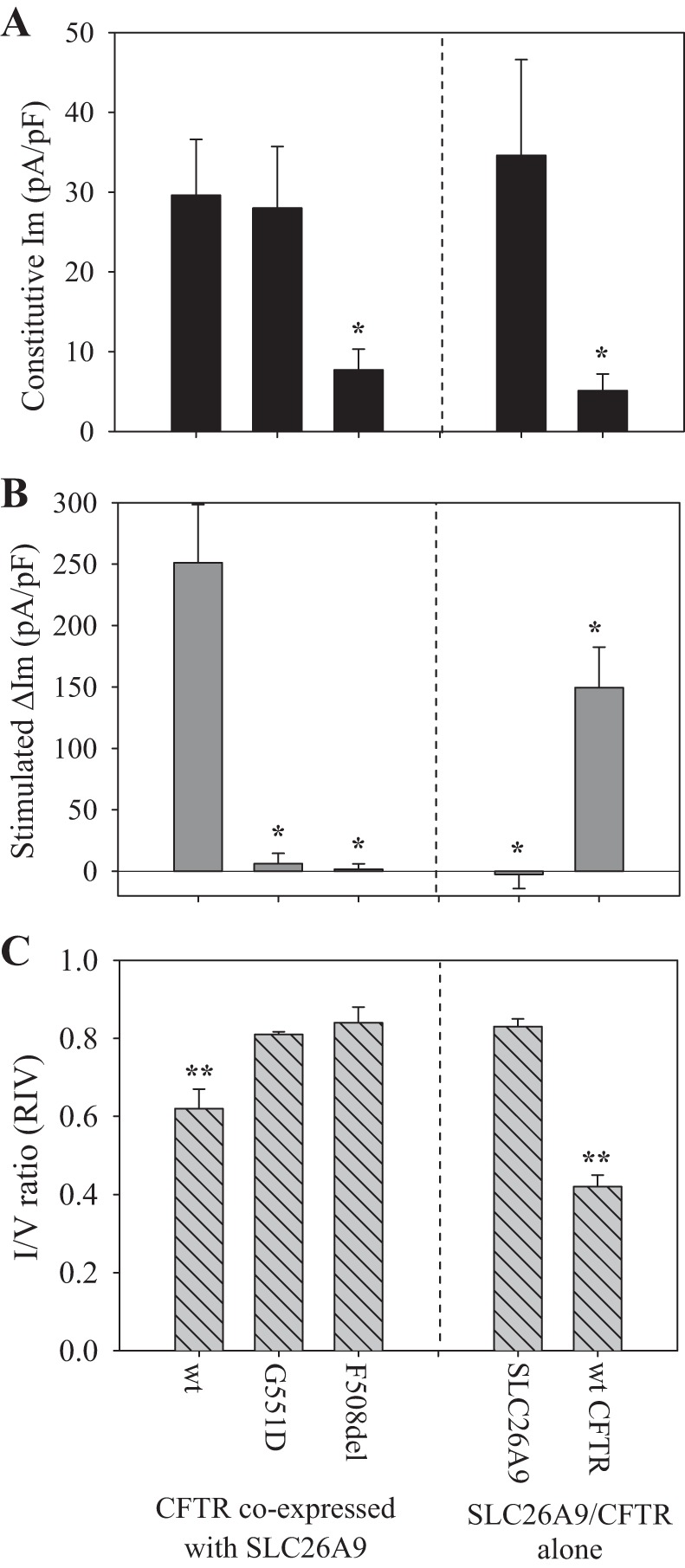Fig. 2.

Coexpressing SLC26A9 with F508del CFTR in HEK293 cells significantly reduces constitutive current, compared with coexpression with either wt CFTR or the functionally impaired G551D CFTR. Whole cell patch-clamp measurement of membrane current (Im) or I/V ratio [RIV (6)], observed in HEK293 cells transiently transfected with myc-SLC26A9 and the indicated CFTR construct (left), or either myc-SLC26A9 or wt CFTR alone (right). A: constitutive current was measured 1 min after break-in and before any treatments. B: after measurement of constitutive Im, cells were treated with 10 µM forskolin and the change in Im (ΔIm) recorded when the response plateaued (~2 min after forskolin addition). C: after measurement of the forskolin-stimulated ΔIm, cells were treated with 50 µM GlyH-101 (in the continued presence of forskolin), and the RIV was measured to confirm the identity of the conducting channel(s). myc-SLC26A9 exhibits mild rectification (RIV ≅ 0.8) when it is the primary conducting channel, whereas wt CFTR exhibits strong rectification (RIV ≅ 0.4) when it is the primary conducting channel. Conduction through both channels results in an intermediate RIV (≅ 0.6) (6). Holding potential = −40 mV. A and B: each bar, n ≥ 5, *P < 0.05 compared with coexpression with wt CFTR. C: each bar, n = 3, **P < 0.05 compared with myc-SLC26A9 alone.
